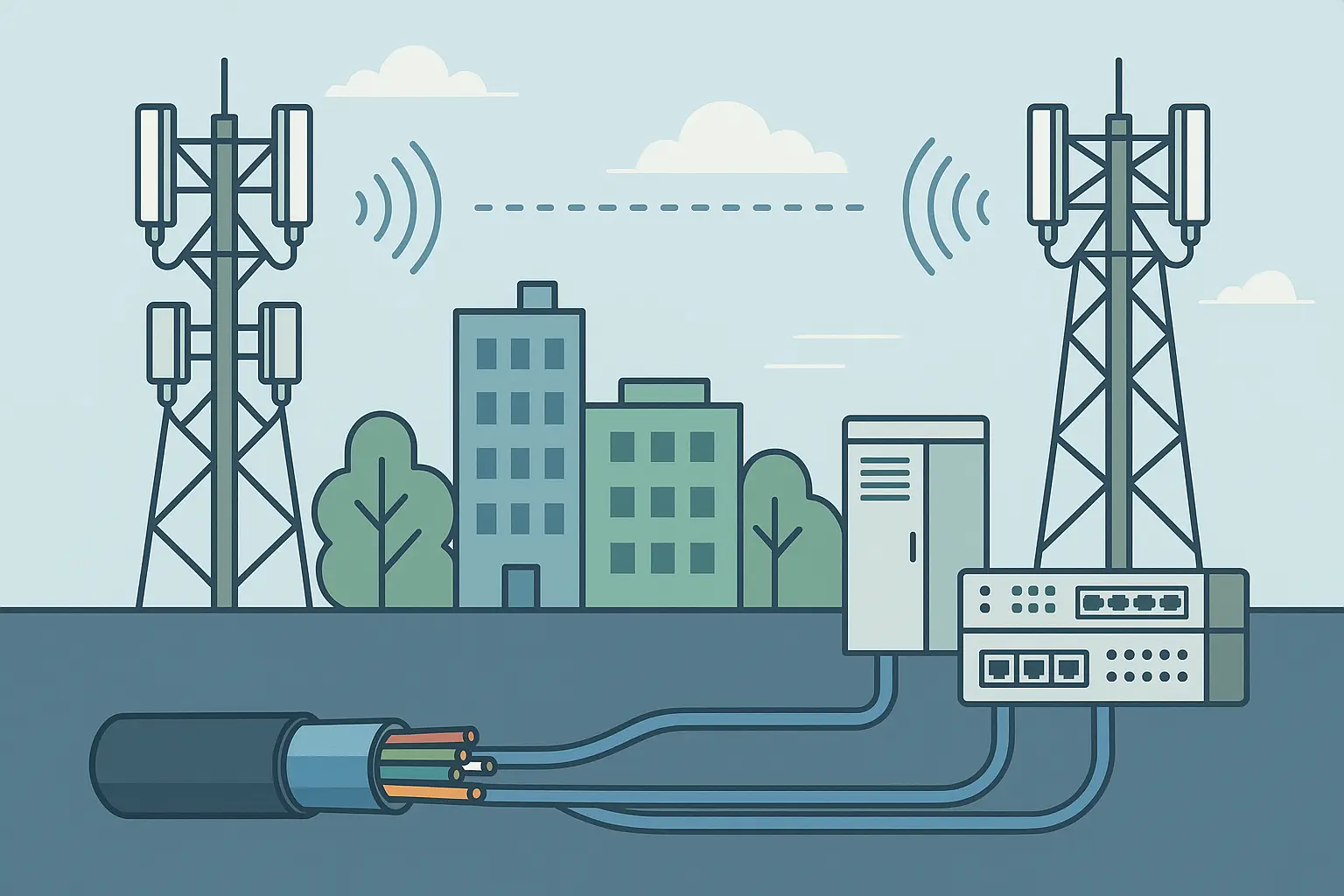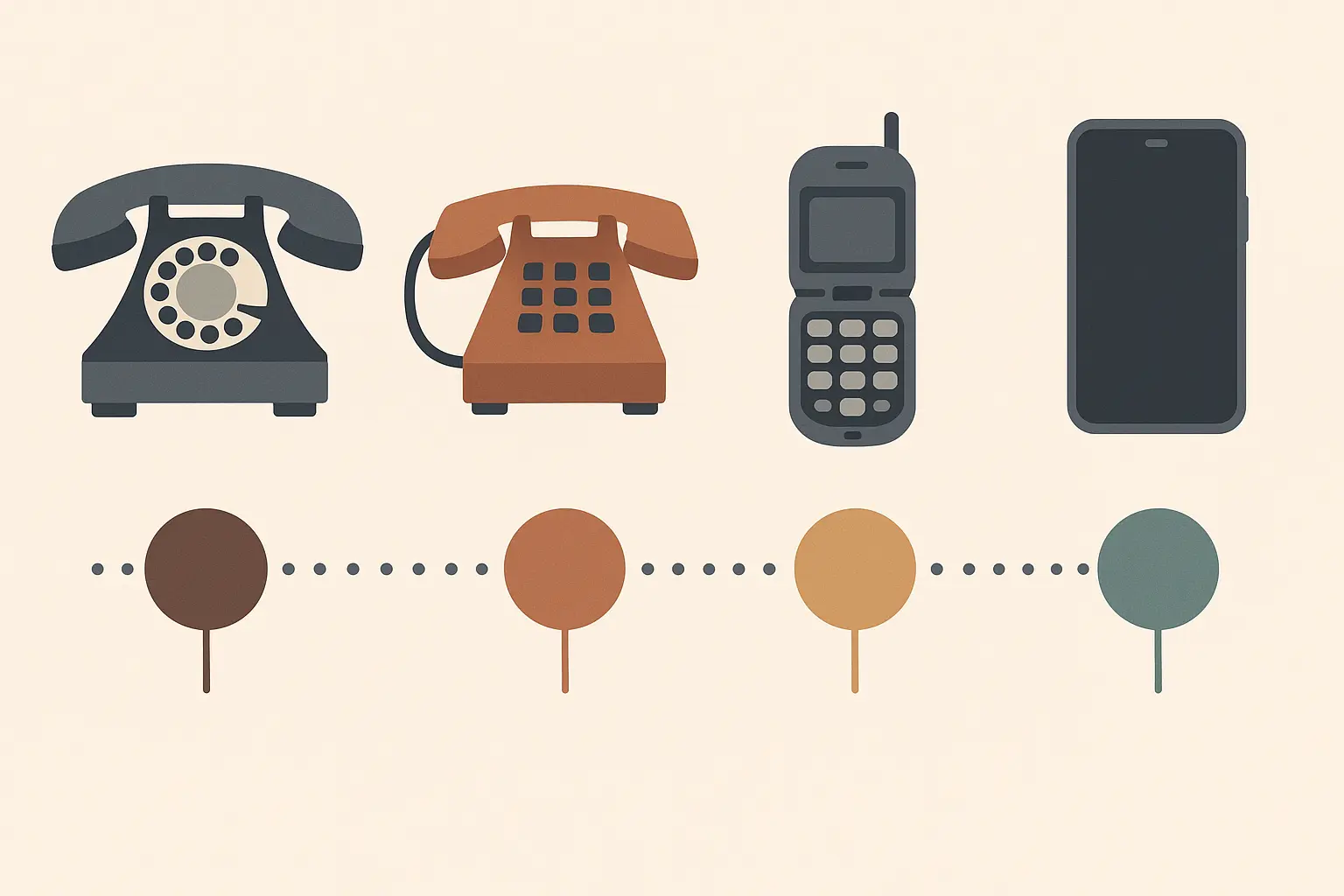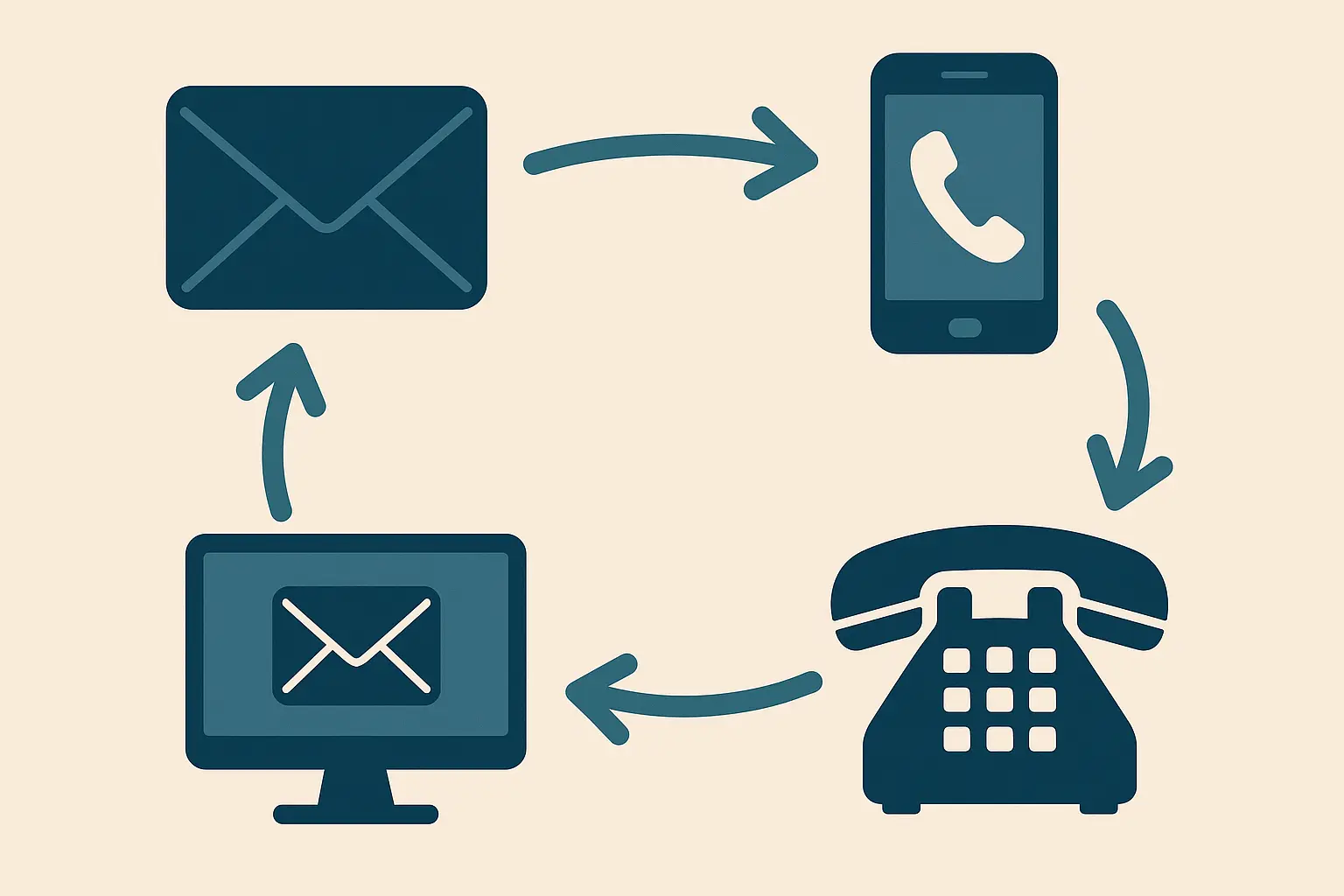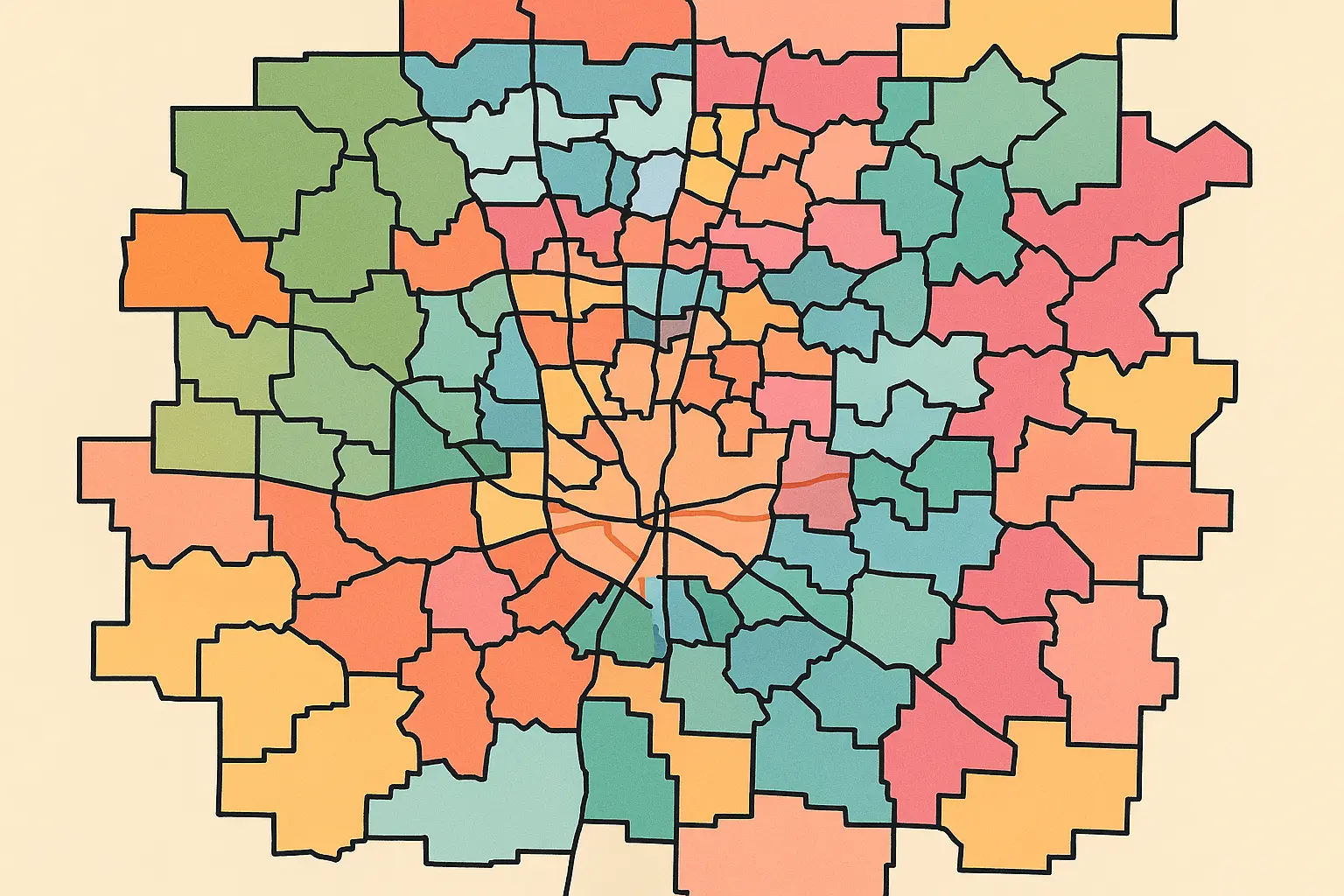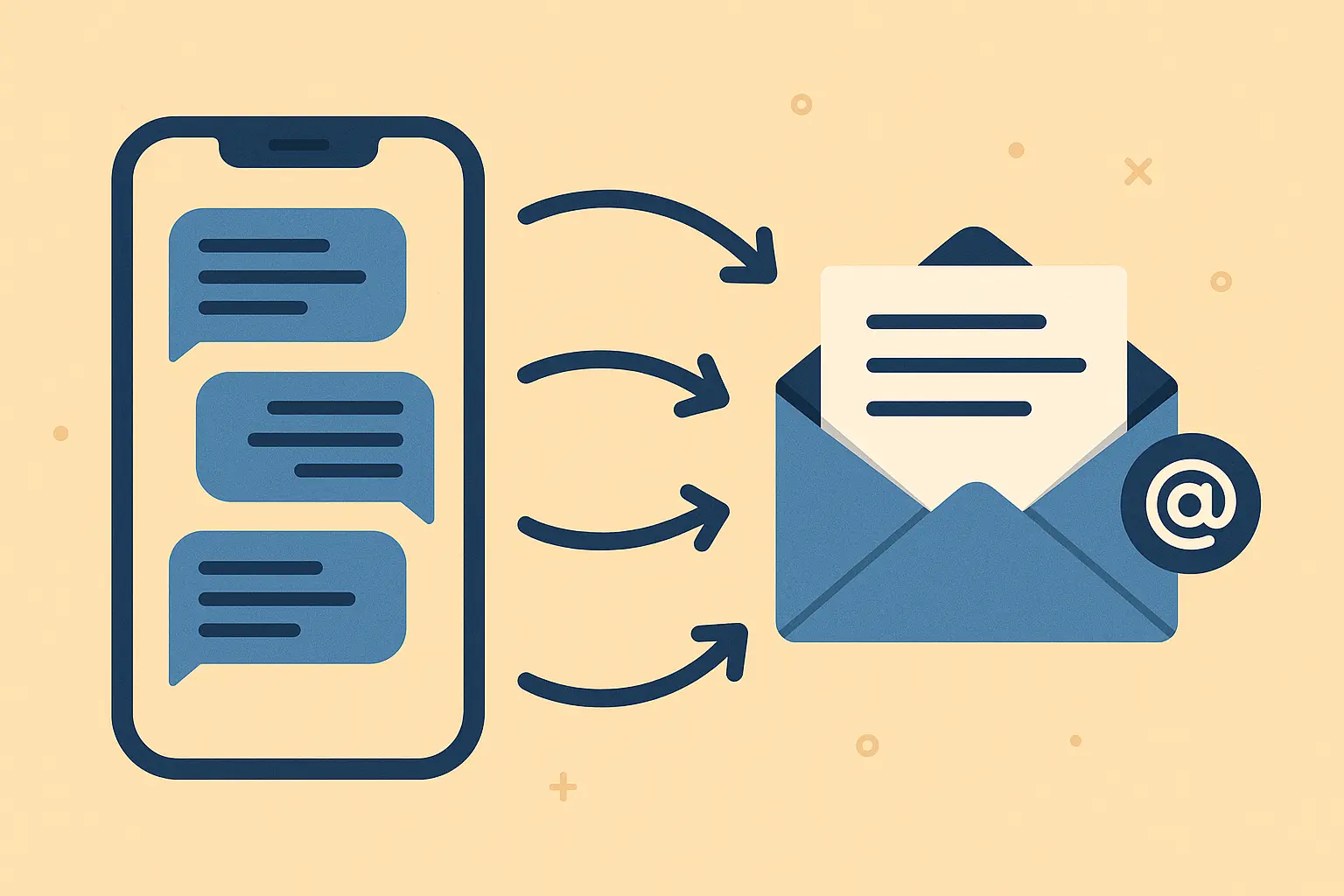If you live or work in Columbus, you probably take your 614 number for granted. But there’s more going on behind those three digits than most people realize – and understanding it can save you headaches and maybe even help your business. With a total population of 1,475,531 people calling the 614 area code home, the Columbus metropolitan area creates unique opportunities and challenges that most residents never fully understand.
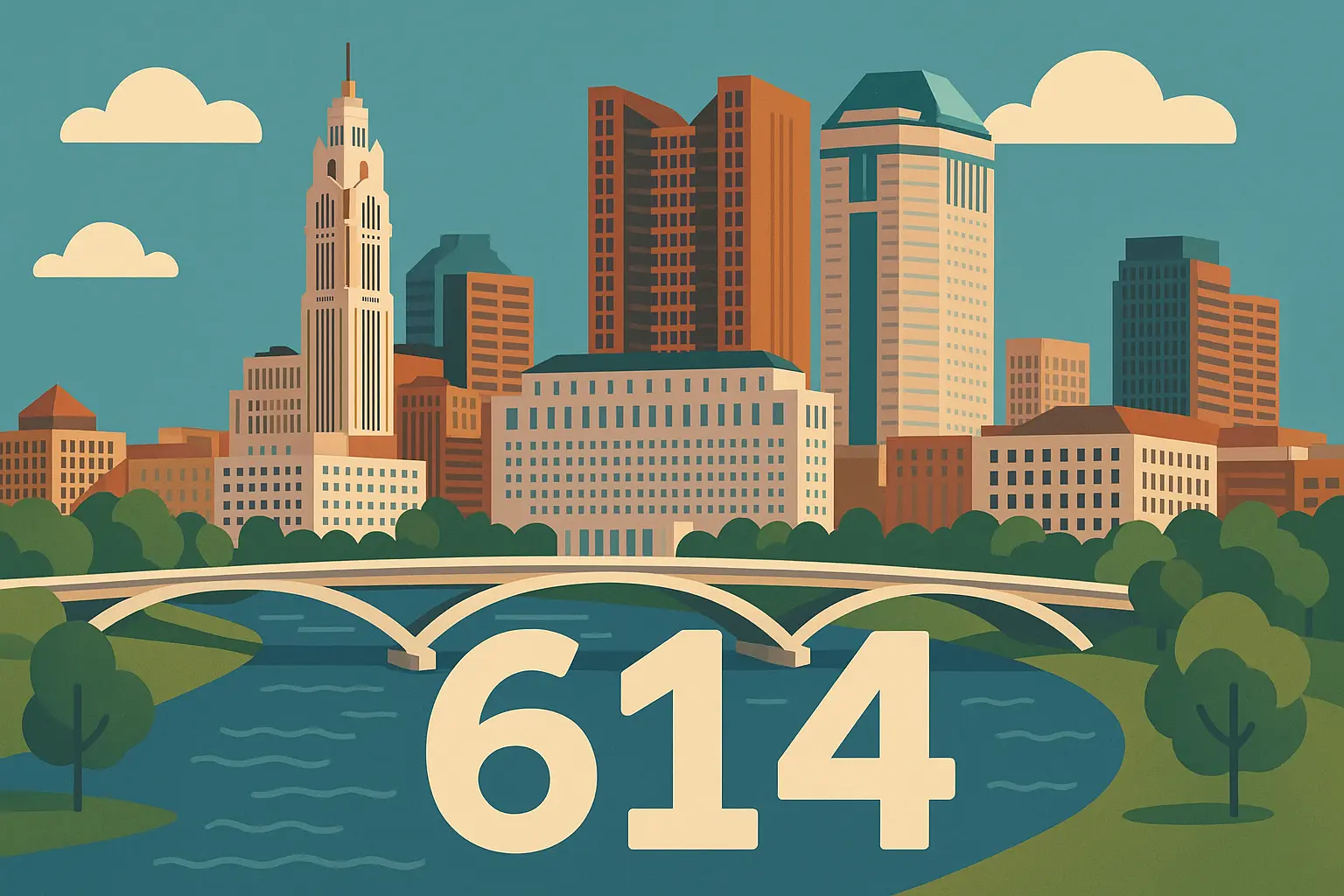
Table of Contents
Table of Contents
-
Where 614 Actually Works
-
The Technical Stuff That Actually Matters
-
How 614 Evolved (And Why You Should Care)
-
How Businesses Really Use 614 Numbers
-
Getting Your 614 Number
-
Making Your 614 Number Work Better
TL;DR
-
614 covers Columbus and central Ohio, with downtown being the premium zone
-
You have to dial 10 digits now thanks to the 380 overlay system
-
Eastern Time Zone affects all your business scheduling
-
Original 614 territory was much larger before splits created new area codes
-
Different carriers have different number availability, so shop around
-
Set up SMS forwarding to email if you don’t want to miss messages
Where 614 Actually Works
The 614 area code covers Columbus and most of Franklin County, plus parts of Delaware and Fairfield counties. Downtown Columbus is the heart of it all – that’s where you’ll find the highest concentration of businesses and the most competition for premium numbers.
According to ZipAtlas demographic data, the median household income in Area Code 614 is $76,051, which means there’s serious money flowing through this area and plenty of demand for quality phone service.
But 614 reaches beyond downtown into neighborhoods like German Village, Short North, and Clintonville. These areas often have better number availability without the downtown premium pricing, and you still get that Columbus credibility that locals recognize and trust.
Downtown Columbus – Where the Premium Numbers Live
The central business district carries weight that goes way beyond just having an address. Downtown 614 numbers have the most commercial credibility because major corporations and financial institutions cluster here. A financial consulting firm at 50 W. Broad Street found that switching from a toll-free number to 614 increased local client response rates by 35% – people just trust local numbers more.
The competition for these premium 614 numbers means you’ll often face waiting lists or higher costs, but the business benefits can justify the investment if your customers value local presence.
Neighborhoods That Still Matter
German Village, Short North, and Clintonville maintain strong Columbus identity while using 614 numbers. You get the perfect blend of residential charm and business connectivity without downtown overhead costs. These communities often have better number availability than the central business district, making them attractive options for businesses wanting local credibility without the premium pricing.
University District Communication Hub
Ohio State University’s massive student population creates intense communication traffic that affects the entire 614 system. Student-oriented businesses often see heavy texting volume on their 614 numbers, especially during enrollment periods and major campus events. The communication patterns here are different – higher evening and weekend usage compared to typical business districts.
Extended Coverage Beyond the Obvious
Most people don’t realize how far 614 reaches beyond Columbus proper. The coverage extends into Franklin County communities and even touches adjacent counties. This broader coverage means you might serve customers who don’t immediately recognize your local connection, especially in outer areas where 614 becomes less obvious to residents.
For businesses managing communications across multiple locations within the 614 area, understanding proper US phone number formatting becomes essential when coordinating with clients nationwide.
|
Geographic Area |
Primary Zip Codes |
Business Density |
Number Availability |
|---|---|---|---|
|
Downtown Columbus |
43215, 43216 |
Very High |
Limited |
|
German Village |
43206, 43207 |
High |
Moderate |
|
Short North |
43201, 43202 |
High |
Moderate |
|
Clintonville |
43202, 43214 |
Medium |
Good |
|
Worthington |
43085, 43235 |
Medium |
Good |
|
Upper Arlington |
43221, 43220 |
Medium |
Good |
Communities like Worthington and Upper Arlington historically claimed 614 numbers, though some have shifted to overlay codes over the years. Geographic boundaries don’t always match telecommunications infrastructure, creating interesting pockets where 614 numbers serve areas in Delaware and Fairfield counties. If you’re operating in these boundary areas, you might experience slightly different call quality or routing delays compared to core 614 coverage zones.
The Technical Stuff That Actually Matters
Thanks to the 380 overlay (added because Columbus ran out of 614 numbers), you now have to dial all 10 digits for local calls. Yes, it’s annoying, but that’s how it works now. The North American Numbering Plan governs how 614 numbers get distributed, and this systematic approach prevents conflicts while ensuring efficient allocation.
Columbus operates on Eastern Time, which affects business hours and automated systems. When you’re trying to get a specific 614 number, different carriers have different availability – so shop around.
How Number Assignment Actually Works
Telecommunications providers manage separate number inventories and follow different assignment protocols. The three digits after 614 aren’t random – they’re allocated to specific carriers and geographic areas. Some 614 combinations route more efficiently through certain network infrastructure, while others might have limitations on SMS capabilities or international calling features.
Federal regulations require carriers to let you keep your 614 number when switching providers, but the porting process can take several days and involves coordination between carriers. Some 614 numbers port more easily than others, depending on their original assignment and current carrier infrastructure.
Eastern Time Zone Impact
Operating in Eastern Time affects more than just business hours. With 68.4% of the 614 area code population in the labor force according to ZipAtlas employment statistics, coordinating business communications across time zones becomes critical for reaching this large working population effectively.
Most 614 businesses follow Eastern Time Zone schedules, creating predictable communication patterns but also potential gaps when serving customers in other time zones. East Coast businesses appreciate the alignment, while West Coast customers might find your 614 availability limiting.
Twice-yearly time changes affect automated systems, scheduled communications, and customer service operations. Your 614 systems need to account for these transitions, especially if you’re running automated messaging or appointment scheduling systems.
How 614 Evolved (And Why You Should Care)
The 614 area code’s journey from 1947 to today reveals patterns that directly impact what you experience today. This evolution affects current number availability, service quality, and the introduction of overlay systems that changed how you dial calls.
The growth pressures on 614 continue today, as evidenced by Eleven Warriors reporting that “numbers are infinite, but there are only so many 614-area codes to be passed around, and with Columbus’ growth, they’re running thin.”
Original Territory vs. Today’s Reality
When 614 launched in 1947, it covered a much larger chunk of central Ohio before population growth forced geographic splits and the creation of new area codes. Areas like Dayton received their own 937 area code as demand outgrew the original 614 capacity. These splits weren’t arbitrary – they followed population density and call volume patterns that continue to influence current service quality and availability.
The current 614 boundaries represent decades of adjustments based on infrastructure needs and population shifts. These changes affect everything from call routing efficiency to business identity considerations, and they continue to evolve as Columbus grows.
Why the Overlay System Happened
The 380 area code overlay means both 614 and 380 numbers can exist in the same geographic area, solving capacity problems but creating new requirements. When multiple area codes serve the same area, the system can’t determine call routing without the full area code.
A Columbus restaurant discovered that their automated reservation system failed after the 10-digit dialing requirement took effect. Customers calling from local 614 numbers couldn’t connect because the system was programmed to expect 7-digit local dialing, resulting in lost bookings until they updated their phone system configuration.
Telecommunications providers now follow specific protocols to distribute new numbers between 614 and 380 based on availability and system requirements. The assignment process considers network capacity, geographic distribution, and carrier-specific inventory management, making number acquisition less predictable than it used to be.
How Businesses Really Use 614 Numbers
Columbus businesses love 614 numbers because they scream “local.” Many companies establish dedicated 614 customer service lines to provide local credibility when serving Columbus-area customers, and this local connection can significantly impact customer trust and response rates.
Local business activity remains strong, as shown by recent 614now.com coverage of restaurant industry changes where “Square Roots Restaurant Group” continues operations while adapting to market conditions, demonstrating the ongoing commercial vitality in the 614 area.
Why Local Numbers Work Better
The psychology of local numbers works especially well in Columbus, where community identity runs strong and people prefer doing business with companies they perceive as local neighbors rather than distant corporations. A restaurant switching from a 1-800 number to 614 saw more reservations almost immediately – people just trust local numbers more.
Major corporations often reserve blocks of 614 numbers for different departments, creating internal numbering systems that can make certain number combinations unavailable to smaller businesses. Government agencies follow similar practices, which explains why some seemingly random 614 sequences are permanently unavailable.
Modern Communication Requirements
Today’s businesses need their 614 numbers to work with email, messaging platforms, and digital workflow systems. Traditional phone service alone doesn’t meet current business communication requirements, especially given the competitive job market in Columbus.
Given that the unemployment rate in Area Code 614 is just 5.7% according to ZipAtlas labor statistics, businesses face a competitive job market where professional communication tools become essential for attracting and retaining quality employees.
Most 614 numbers support text messaging, but managing these messages effectively requires additional tools and strategies. The challenge comes when you’re trying to manage high volumes of SMS traffic while maintaining professional response times. For businesses managing high volumes of SMS traffic on their 614 numbers, forwarding messages to Slack channels can streamline team communication and ensure faster customer response times.
Companies also need to connect their 614 phone communications with email systems for record-keeping, customer service tracking, and team collaboration. Without proper integration tools, messages can fall through the cracks during busy periods or system outages.
Getting Your 614 Number
Here’s the reality: different phone companies have different 614 numbers available. Verizon might be out of what you want, but T-Mobile could have it. Don’t get stuck with one carrier if you want a specific number.
Getting a 614 area code requires working with telecommunications providers who manage separate number inventories and follow different assignment protocols. Each carrier maintains distinct blocks of available numbers, meaning your provider choice directly affects which specific 614 options you can obtain.
|
Provider |
614 Availability |
Typical Wait Time |
Special Features |
Monthly Cost Range |
|---|---|---|---|---|
|
Verizon |
Limited |
1-3 days |
Advanced SMS |
$30-60 |
|
AT&T |
Moderate |
2-5 days |
Business features |
$25-55 |
|
T-Mobile |
Good |
Same day |
International options |
$20-45 |
|
Local carriers |
Variable |
1-7 days |
Custom solutions |
$15-40 |
Current Availability Patterns
614 number availability fluctuates based on market demand and Columbus area growth. Some number combinations are just gone – reserved for emergency services or grabbed by big corporations years ago. Have a backup plan and be flexible.
A Columbus startup spent three weeks trying to get a specific 614 number sequence that matched their business name, only to discover those numbers were reserved for emergency services. They eventually found a similar sequence through a different carrier that worked just as well for their branding needs.
Major carriers like Verizon, AT&T, and T-Mobile each maintain separate blocks of 614 numbers. Some carriers specialize in business features while others focus on consumer pricing, affecting both availability and service quality. Regional carriers sometimes have access to number blocks that major national providers don’t offer.
Geographic and Service Coordination
While area codes and zip codes serve different purposes, their overlap affects business planning and service delivery coordination. Key Columbus zip codes like 43215 (downtown), 43201 (campus area), and 43214 (Clintonville) align well with primary 614 coverage areas, creating natural service territories for businesses.
When setting up your 614 number for the first time, following a comprehensive SMS forwarding setup guide ensures you won’t miss important messages during your initial configuration period.
Some zip codes span multiple area codes or extend beyond 614 coverage, requiring careful consideration when planning business service territories or customer communication strategies.
614 Number Management Checklist:
-
Document your current number assignment and carrier details
-
Set up voicemail with professional greeting
-
Configure SMS forwarding if needed for business use
-
Test call forwarding and routing options
-
Establish backup communication methods
-
Review monthly usage patterns and optimize plan
-
Keep carrier contact information easily accessible
-
Plan for potential number porting needs
Making Your 614 Number Work Better
Your 614 number can do more than just ring. Set up voicemail that actually sounds professional. If you’re running a business, consider forwarding texts to email – especially useful since Columbus runs on Eastern Time and you might miss late messages.
Columbus-area businesses can significantly enhance their 614 number effectiveness through smart communication management. The key is treating your 614 number like the business asset it is, not just another phone line.
Auto Forward SMS addresses critical communication gaps that many 614 users face by automatically forwarding incoming text messages from your 614 area code to designated email addresses. This proves invaluable for businesses managing multiple communication channels, with advanced filtering capabilities allowing you to create specific forwarding rules – customer service texts can go to one email while sales inquiries route to another department.
The service addresses a fundamental problem: missed messages during busy periods or when devices are unavailable. Traditional SMS management relies on checking your phone regularly, which doesn’t work for businesses that need comprehensive message capture and team coordination.
For Android users managing 614 numbers, understanding complete SMS forwarding setup on Android devices ensures seamless message management across all your Columbus-area business communications.
Given that 614 numbers operate in the Eastern Time Zone, messages received outside business hours still get captured and forwarded to email, enabling timely follow-up during regular business hours. The automation removes the human error factor that can cause missed customer communications. Businesses concerned about maintaining continuous service should also review app sleep prevention strategies to ensure their 614 number forwarding remains active during critical business periods.
The Real Deal
Your 614 number connects you to Columbus in a way that matters to locals. The technical stuff – 10-digit dialing, the 380 overlay, Eastern Time – you just have to deal with it.
But if you understand how it all works and set up your communication properly, that 614 number becomes a real advantage. Columbus people recognize it, trust it, and respond to it. That’s worth something.
The combination of local credibility and comprehensive message management creates the professional communication foundation that Columbus businesses need to thrive. Whether you’re running a business downtown or managing communications from the suburbs, knowing how these systems work together gives you an advantage in planning and troubleshooting.
Most importantly, integrating your 614 number with modern communication tools ensures you’re not missing opportunities. The overlay system with 380 has changed how we dial calls, but it’s also opened up new number availability that wasn’t there before.


